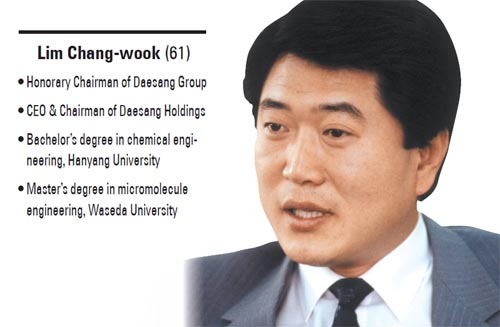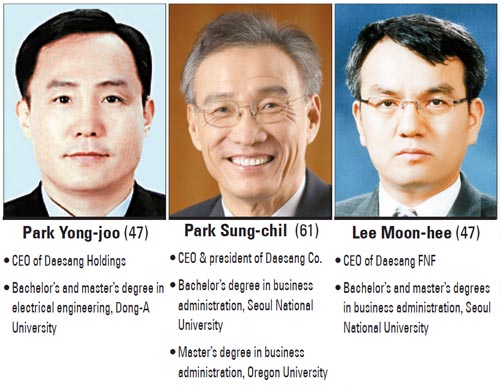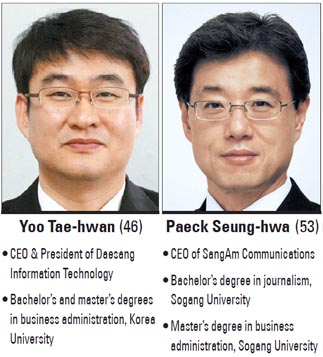Still a mainstay in Korean kitchens
Published: 05 Sep. 2010, 22:39

With highly recognized brands such as Chungjungwon - well-known for its Sunchang gochujang sauce lineup - and Chonggajip, market leader in mass-produced kimchi, the group’s hefty influence in Koreans’ eating habits has fueled the group’s longevity and allowed it to branch out into other areas of business.

The group’s beginnings lie in Busan, where in January 1956 a small factory occupying 496 square meters (5,339 square feet) called Donga Hwaseong Industrial Corporation opened its doors. Equipped with not much more than earthenware pots and a five-horsepower motor, group founder Lim Dae-hong and 30 other employees manufactured 500 kilograms (1,102 pounds) of artificial seasoning a month. Christened Miwon, the product overtook Japan’s Ajinomoto as the domestic market leader in artificial flavoring, allowing the Korean company to build a foundation as one of Korea’s leading food manufacturers.
However, a challenger soon materialized in the form of Mipoong Co. - a Samsung subsidiary that was later renamed CJ CheilJedang - which quickly became No. 2 in the industry by merging with several competitors and launching a complex artificial flavoring called Dashida in 1975. Daesang belatedly offered a complex artificial flavoring of its own called Matna in 1982, but could not shake Dashida’s lead.
Since then, Daesang has turned its energies to becoming a comprehensive food company as well as branching out into other business fields. After founder Lim Dae-hong passed on the reins of the company to his eldest son Lim Chang-wook in 1987, the group saw IT services corporation Daesang Information Technology established in 1991, while advertising company SangAm Communications first saw light in 1993.
With the launch of the comprehensive food brand Chungjungwon in 1996 and formally changing its flagship company’s name to Daesang Co. in 1997, it seemed that Daesang Group was ready to vault ahead once more. However, the Asian financial crisis forced Daesang to realign its businesses.

Analysts believe the company will be successful in rebounding from last year’s difficulties, contributed by the global financial crisis. “Daesang is expected to regain the market’s trust through a stable profit intake from its food operations as well as an infusion of low-priced corn, helping to keep the performance of its starch operations improving,” said Choi Ja-hyun of Woori Investment & Securities.
In contrast to the squeaky clean, family-friendly image evoked by the group’s brand names, the private lives of Daesang’s owner family have been taken through the ringer because of scandals in recent years. Current group honorary chairman and controlling shareholder Lim Chang-wook was infamously charged with appropriating company funds in 2005, and the divorce of his eldest daughter Lim Se-ryung from Samsung Electronics vice president Jay Y. Lee in early 2009 made headlines.

Having led the Daesang fleet through a period of expansion and rearrangement since 1987, chairman Lim Chang-wook became the head of Daesang Holdings Co. in 2005, stepping back from active management to leave the group in the hands of professional managers.
CEO Park Yong-joo took the position in 2007. Previously, he had risen through the ranks of Daesang, formerly serving Daesang Farmsco as its head of operations.
Park Sung-chil took the helm of Daesang Co. in March 2009, and has done much to refresh the company. Simple strategies to bolster productivity and creativity, such as instituting a freer dress code, instituting a 7 p.m. shutdown of offices and holding contests to reward product knowledge have all been said to greatly improve the atmosphere in its operations.
Lee Moon-hee, CEO of Daesang FNF, also took the position in 2007. Having worked at both Daesang and Genesis BBQ, one of Korea’s leading chicken and dining franchisers, Lee is known to have transformed his company into an IT-friendly workplace, bridging the gap between younger generations and established brands like Jonggajip.
Daesang Information Technology’s CEO Yoo Tae-hwan is also a recent addition to the group’s corner offices, having taken the helm of Daesang IT in December 2009. He worked in Daesang Co. and Daesang Farmsco before taking his current position.
Paeck Seung-hwa, the CEO of SangAm Communications, is a born-and-bred ad man, having risen through the ranks of advertising agency KORAD since its inception in 1981. He has many awards to his name for his TV advertising campaigns in the 1990s, and became the head of SangAm Communications in 2006.
By Lee Jung-yoon [joyce@joongang.co.kr]










with the Korea JoongAng Daily
To write comments, please log in to one of the accounts.
Standards Board Policy (0/250자)